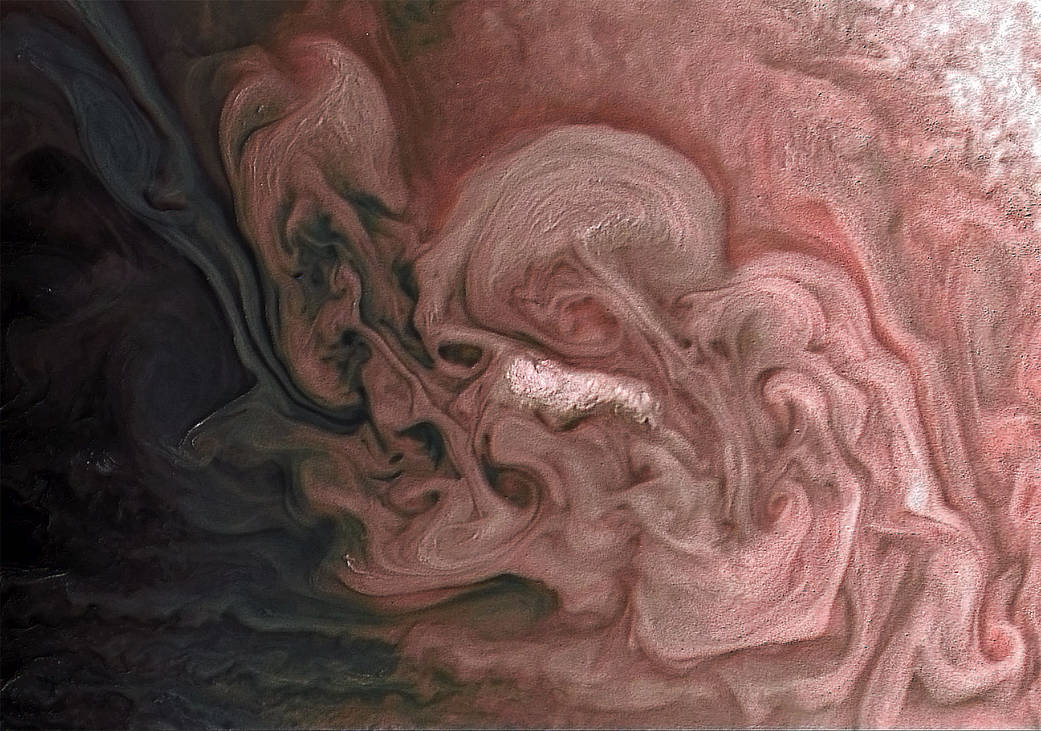
A new photo shows a swirling maelstrom on Jupiter through rose-colored glasses.
NASA's Juno spacecraft snapped the original picture on Feb. 7, during its 11th close flyby of the gas giant. At the time, Juno was 7,578 miles (12,195 kilometers) above Jupiter's cloud tops, at a latitude of 49.2 degrees north, NASA officials said.
"Citizen scientist Matt Brealey processed the image using data from the JunoCam imager," NASA officials wrote in a photo description Friday (March 16). "Citizen scientist Gustavo B C then adjusted colors and embossed Matt Brealey's processing of this storm."
NASA and the Juno mission team encourage such image-processing efforts. To learn more or try your own hand, go to the JunoCam site.
The $1.1 billion Juno mission launched in August 2011 and arrived at Jupiter in July 2016. Juno loops around the solar system's largest planet in a highly elliptical orbit, zooming close once every 53 Earth days. It's during these close approaches — such as the Feb. 7 encounter — that the probe collects most of its science data.
That information consists largely of measurements of Jupiter's gravitational and magnetic fields, as well as details about the planet's structure and composition. Juno's observations should help scientists better understand how Jupiter — and, by extension, the solar system — formed and evolved, mission team members have said.
Follow Mike Wall on Twitter @michaeldwall and Google+. Follow us @Spacedotcom, Facebook or Google+. Originally published on Space.com.
Get the Space.com Newsletter
Breaking space news, the latest updates on rocket launches, skywatching events and more!
Join our Space Forums to keep talking space on the latest missions, night sky and more! And if you have a news tip, correction or comment, let us know at: community@space.com.

Michael Wall is a Senior Space Writer with Space.com and joined the team in 2010. He primarily covers exoplanets, spaceflight and military space, but has been known to dabble in the space art beat. His book about the search for alien life, "Out There," was published on Nov. 13, 2018. Before becoming a science writer, Michael worked as a herpetologist and wildlife biologist. He has a Ph.D. in evolutionary biology from the University of Sydney, Australia, a bachelor's degree from the University of Arizona, and a graduate certificate in science writing from the University of California, Santa Cruz. To find out what his latest project is, you can follow Michael on Twitter.









